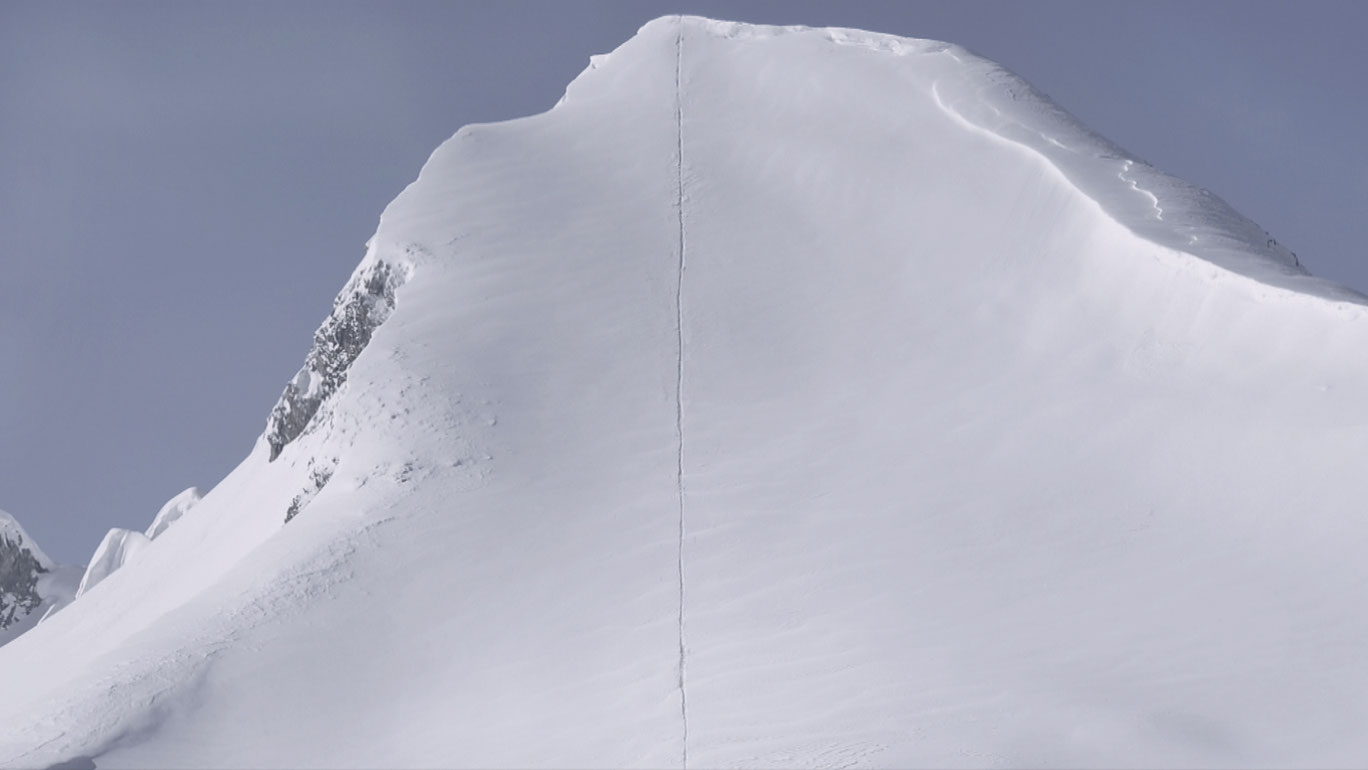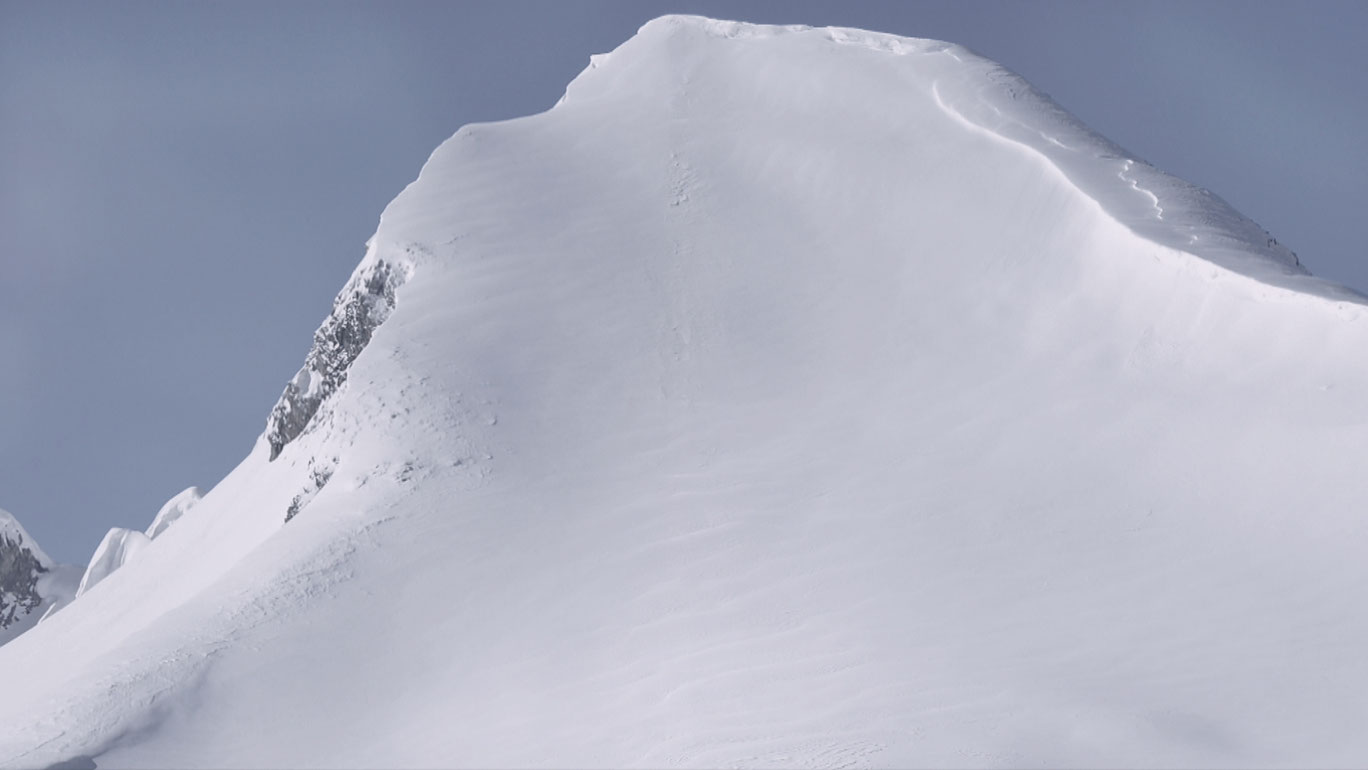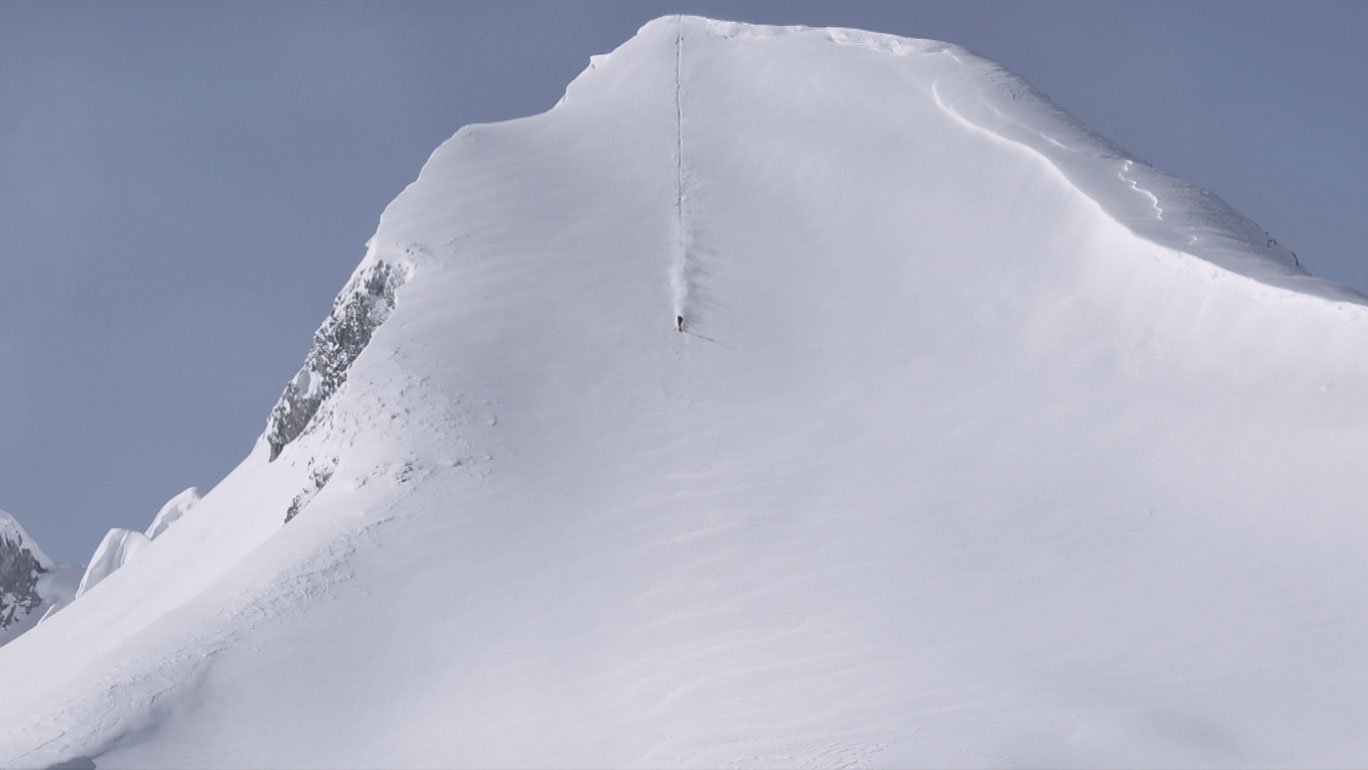O.T.
Markus Scherer´s four-minute film O.T. begins as though it were a landscape painting from the nineteenth century. A snow-peaked mountain top rises majestically. The camera’s motionless gaze invites careful observation: one recognizes the steep rock flanks on which no snow is lying, perceives the sculptural protuberances of snow drifts, the slightly quilted surfaces of the white fields.
The soundtrack consists of an extremely deep drone, inducing the viewer to sink in even deeper. Gradually, all certainty about what one sees dissolves. Is that actually a mountain that is depicted or simply a small, snow-covered rock? Since there are no figures to compare in terms of size, the image topples. Perhaps it is a bit of shore protruding into an iced-over body of water. There are no birds to offer a clue, as in traditional landscape paintings. Or are there?
The waft of sublimity is suddenly broken by a black splotch on the upper edge of the snow formation. But this is no landed mountain jackdaw; instead, a snowboarder coming from the backside of the peak, getting into position. Now he races in a tuck down the steep slope, to then disappear from the lower edge of the picture around fifteen seconds later.
The snow-covered high mountains were a practice slope for the modern aesthetics of the interwar period. Filmmakers and photographers, excited by accelerated bodies, used skiing as an example for trying out the visual effects of extreme top and bottom views, backlighting, and brusque black-white contrasts. Markus Scherer, too, operates on the seam between graphic surfaces and pictorial space, but counters the rush of speed with an anti-dramatic gesture. His actor leaves no spectacular curves in the snow, just a sharp, straight cut—as though a painter had cut open a canvas.
(Matthias Dusini)
Translation: Lisa Rosenblatt
O.T.
2013
Austria
4 min



